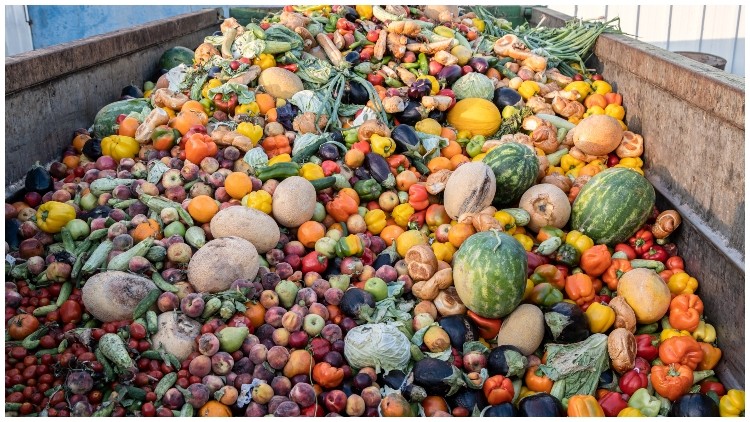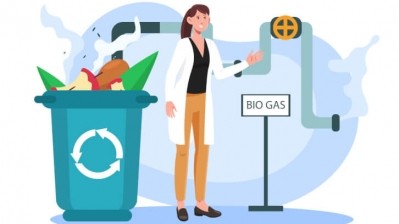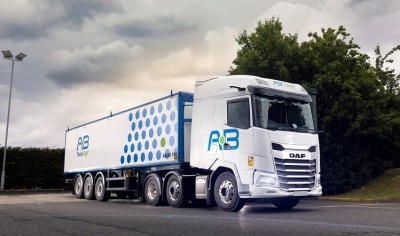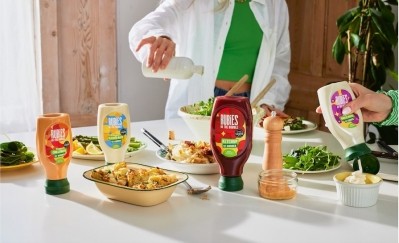Long read
Novel ways of reducing food waste in F&B manufacturing

It’s well-known among industry that, globally, 25-30% of food produced is lost or wasted, and this kind of waste is estimated to contribute 8-10% of human-made greenhouse gas (GHG) emissions.
Headlines have also made us familiar with the notion that if food waste were a country, it would be the world’s third largest emitter of GHG. As such, we’ve seen more and more food producers looking at ways in which they can limit their waste, which not only minimises their environmental impact but also improves their bottom line.
Last month, we gathered four experts in the industry undertaking great work in this area to find out what novel approaches they have taken to address food waste and how this has impacted their processes.
Among the panellists were Sara Isaacson, global product marketing retail and consumer foods lead for Mulesoft; David Couldrey, technical director of Wicks Manor; Louisa Ziane, co-founder and chief operating officer of Toast Ale; and Dave McDiarmid, corporate relations director of Princes Ltd.
There’s no room for waste
Looking at how we got the point of food waste being such a considerable GHG contributor, McDiarmid said that it’s a result of how we view food.
“We got to where we are today through not really valuing our food and seeing it as disposable, with manufacturers and others building waste into their operations. Historically it has been seen as a ‘cost of business’ rather than something that should be ‘eliminated at all costs’,” he said.
There’s been a consistent drive over many years to obtain ‘perfection’ in terms of food aesthetics, which has in turn, fuelled the public’s distaste for anything ‘wonky’ as it’s referred to now.
But, as McDiarmid said, the industry is changing and it’s started to tackle this. “We are measuring it, setting targets, looking at ways to reduce food waste not just in our own systems but throughout the supply chain.”
He also noted that the pressure of climate change and more recently, the cost-of-living, has helped drive incentive for change.
“There’s no good reason in this day and age for food waste.”
Adding to this, Ziane said: “There’s lots of structural problems that have created a disrespect for food and our food system and therefore it’s wasted in such huge volumes. But now we do have the sustainability goals, SG2.3 is about harvesting food waste and loss in the food system and many businesses are quite rightly looking at how to tackle it because we have an environmental right to do so, but also from a cost perspective and for resiliency.”
As Ziane said, we need food – we are dependent on it, yet our system is incredibly fragile, as evidenced in the last few years.
“The concept that we are wasting food whilst we’re struggling doesn’t make sense…
“People are so much more aware of food waste that we’re seeing more pressure. We’re seeing change.”
The hidden factory
“Every business has got a cost of poor quality – it’s the hidden factory, you almost have a percent of your profit being lost through poor practice and wastage,” added Couldrey. “In this business environment there is no space for that.”
Couldrey gave an excellent case study of how Wicks Manor’s own hidden factory was operating:
“We had an on-going problem with bacon yields. So we got an improvement team together, involving staff from the bacon line itself – If you want to know about a problem, ask the people who live there!
“We used process analysis to look at each step and how the yield of the bacon could be affected. From there we had a long list of potential issues.”
He explained that the team attempted to solve the problem somewhat blindly to begin with, making assumptions and buying a new slicer.
“That made the problem worse!” He admitted. So it was back to the drawing board.
“We then collected data at each of these points where we thought the yield was being affected. We analysed it, came up with a solution and actioned those. We then re-measured to see if it worked – and it did.”
The company ended up saving £79k a year and learnt more about its processes than ever before.
“The beauty is, that method can be applied to anything across the process.”
Can we automate this and be done with it?
Speaking from a solutions provider point of view, Isaacson flagged the benefits of technology but noted that simply installation is not the key.
“Robotics and automation can monitor technologies” to collate data for example, “but it always comes down to integration”.
In other words, it’s not useful simply having these tools at your disposal if they can’t work together.
Right now, many food and drink companies will be experiencing the same problem – data is siloed, living in different systems and therefore, there is not a single source of truth.
“It’s [then] difficult to understand where waste is occurring and what is being wasted,” Isaacson explained. “Sometimes it’s hard to integrate this all as a company, so that’s why we come in – to help connect the data, from on-premise, to client data, to cloud data, to [help companies] make informed, real time decisions.”
This kind of approach could then allow companies to assess where waste is occurring and allow them to, for example, forecast stock more accurately.
Your questions answered
As part of the discussion, we opened the conversation up to our viewers. In this section, the speakers answer some of the questions received during the Q&A but that we didn’t get round to answering (you can watch the full webinar for free, on-demand here).
Education and food waste
Q: We used to teach children how to use ingredients without waste, roast chicken cold cut, soup stock, this is no longer taught in schools. Do you see opportunities for companies to educate their consumers to use all their products i.e., leftovers?
“I believe that there should be a government website with a database of recipes,” responded Couldrey. “I picture this as a site where people type in the leftovers they have and the website searches the site for recipes that can be produced from these leftovers. Jamie Oliver would be the perfect candidate for this.
“Companies could put recipe ideas on their own website for leftovers, but this wouldn’t be as easy for the public to use. It would be wrong for companies to put recipe ideas on their labels as these are crowded enough already and it would also result in labels having to be bigger leading to more packaging waste.”
“Yes, absolutely,” commented McDiarmid in response to the audience question. “According to WRAP, we throw away 6.6 million tonnes of household food waste a year in the UK, and almost three quarters is food we could have eaten. There is no good reason for that to happen, particularly when millions are living in food poverty across the country, as the cost-of-living crisis continues.
“So as well as tackling food waste in our own operations, raising awareness among consumers on how they can cut waste at home is crucial.
“Last year, we launched an initial ‘Love Your Leftovers’ campaign, creating recipe videos of delicious meals prepared using our kitchen cupboard staples, along with everyday leftovers. We’re looking to build on this initiative in 2023, helping families to waste less and save money during the cost-of-living crisis.
“Over the past two years, we’ve also supported WRAP’s annual UK Food Waste Action Week to highlight the role that preventing food waste plays in tackling climate change but there is a huge amount more we can do here – Princes and the industry – and it’s a mission for the sustainability team to land more of these messages with consumers via our brand teams and consumer communications.”
Collaboration between the chain
Q: What do you think producers/manufacturers can do to work with retailers to ensure that waste before point of sale is reduced? It could be seen to be 'out of their hands' and therefore not their problem if product goes unsold. Do you think they should be taking action when it comes to inventory levels/amount of stock sold?
“It’s perhaps tempting to take an ‘out of our hands’ approach but we need to always look at this with a supply chain lens and in fairness all of our major customers are already very active on this issue, particularly in shorter life areas and donations of unsold products are essentially now a ‘given’,” said McDiarmid. “For Princes, if we have a large amount of unsold stock – maybe a promotion fell short or a forecasting error – it’s usually something that can be easily accommodated due to the life our products have; meaning there’s time to sell through.”
“Inventory levels/amount of stock sold is a common challenge across the food and beverage manufacturing industry. There's a clear disconnect between manufacturers and retailers and that's driven as a result of a people, process or technology challenge. Easier sharing of data relating to stock, goods sold in real-time enables better traceability and visibility of where waste is being incurred across the entire supply chain - from point of sale all the way up the supply chain to where the raw materials are grown (from field to fork / grain to glass) would help,” added Isaacson.
“One party can take steps to get this in place, but the other needs to be in a similar position to facilitate the easy exchange of information up and down the supply chain securely and in real time.”
Artificial intelligence
Q: Do you think that AI could play a significant role in creating more accurate demand forecasts?
“Absolutely,” responded Isaacson, but added that “AI is only as good as the data you feed it”.
She elaborated: “Key to AI being impactful in the sales and demand planning domain is an enterprise data and architecture strategy, which must be heavily geared towards creating common data products that you can easily reuse and feed into the AI tool. This will ensure that you're working from a single source of truth for each data object, enabling consistency and you to scale with your predictive AI capabilities within this domain and others.”
Upcycling, by-product and aesthetics
Q: Have you looked into making bioplastic from the tomato skins? I know it was something invested in 2016 via EU funding.
“We’re always exploring new opportunities to reduce food waste across our supply chains and upcycling tomato skins into packaging is a potential option we’re looking into currently. We will keep you posted!” McDiarmid said.
Q: Looking at one of the examples mentioned, where a crumpet with a bigger hole or not the ‘right’ shape is wasted because it doesn’t meet customer expectations: Do you think customers have been wrongly educated over the years to expect 'perfect' products? The amount of waste produced for quality reasons is clearly not sustainable for manufacturing.
“Using the crumpet example, I would firstly look at the process and identify why the line is producing sub-standard products. Has the line always produced sub-standard product? Has this level of wastage been costed into the product? If the answer is yes, the business should look into running an improvement project on the line to reduce this wastage,” Couldrey advised.
“Forming an improvement team using staff from the line and a maintenance engineer, the team should look at the quantity and frequency of the rejects. Do the rejects happen at a particular time? Are rejects produced whilst the process line is being set up? Do reject quantities increase when particular staff are on the line? Identifying who is on the line when the least amounts of rejects are produced and seeing what is different may identify positive work methods that result in less wastage.
“Once the team has this information, they can look at possible solutions. These solutions should then be tested. This would not only reduce wastage, it would also prevent the costs of producing rejects.
“Consumers often associate a certain level of quality with a brand. Brands could put a green stripe on the label if it didn’t meet usual visual standards. This would enable the consumer to make a choice on whether they really need a perfectly shaped product. Over time, retailers could monitor the sales of these products and if these sold out, manufacturers could just label it differently under a national scheme, rather than it going to waste.”
Q: How do you balance different means of avoiding food waste e.g., anaerobic digestion vs working with charities?
“All finished food and drink goods produced at our UK sites, that cannot be sold for whatever reason and is fit for human consumption, is donated to FareShare, and many of our UK customers have a similar arrangement,” replied McDiarmid. “So for us, if it’s in the can and isn’t going to be sold it ends up with FareShare – as long as, of course, it’s safe to consume.
“Food processing waste on the other hand, such as vegetable peelings or wastewater, is diverted/ upcycled in a number of ways.
“In 2021/2022, 69,141 tonnes of food waste were generated across our global operations. Of this total, 19,130 tonnes were sent to anaerobic digestion (AD) plants to be converted into energy, while 40,879 tonnes were recycled into bio-based materials and 4,897 tonnes were used as animal feed.
“The AD plants we have do require a certain throughput of waste – and our operational waste is key to this – but we are talking here about items that would be extremely difficult to repurpose for human consumption bearing in mind there are very strict requirements for every surface, container or touchpoint for a raw material that is going to be eaten by a human as opposed to going to AD or animal feed.”

















